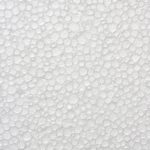To answer this question quickly, you must, first of all, understand why we laminate out certificates and other crucial documents.
When we laminate, we sandwich paper between two layers of plastic, which eventually lengthens the life and protects the document from damage.
A lamination is also a form of waterproofing.
Can Laminated Papers be Recycled?
For a long time, I hadn’t focused much on laminated paper.
I passionately hated plastics and anything to do with them, until recently when I attended a bioplastics exhibition and heard a professional say that it’s not possible to recycle laminated paper in conventional ways.
It got me thinking. Really? I wish I knew this before.
Then GreenLivingDetective told me that it doesn’t make sense to encase an important document inside plastics. Why is that so?
While the paper is biodegradable, lamination paper isn’t; it’s pure plastic and can stay in landfills for centuries! Everything about lamination is just a bubble.
See, the lamination process emits a lot of heat and toxic chemicals to essentially enclose paper inside sheets of plastic.
Remember: Lamination can damage or degrade important documents over time.
So, what is lamination paper made of? Well, the outer layer is made from Polyethylene Terephthalate (PET) while the inner layer is typically Ethylene-Vinyl Acetate.
These two plastics are hardly recyclable and are therefore a threat to the environment.
How Long Does Laminated Paper Last?
Lamination is a sure great way to make your papers withstand rough handling, exposure to water, etc. Does it last forever, then?
First off, lamination paper is made of synthetic plastics that are not as strong as you may expect. With time, the paper will break down as moisture creeps in.
You now understand why laminated documents slowly lose their aesthetic appeal.
The piece is also likely to peel, leaving your document looking tacky.
Here are a few eco-friendly alternatives to laminating:
- Waterproof Paper. Unlike laminated paper, waterproof paper is chemical-proof, durable, and simply worth it. As you can see in this example, this method is relatively cheaper and you don’t need to continually replace it. Besides, waterproofing beautifies your documents for as long as you want, which isn’t the case with laminated paper.
- Report Covers. That paper materials eventually tear or fall apart due to frequent handling is a no-brainer. Water or drink spills could ruin your certificates completely. Fortunately, you can use report covers to protect your essential documents from such factors. The best part is that they make a paper appear professional and appealing.
- Synthetic Paper. This is yet another great alternative to laminating. Synthetic paper is a polyester fabric used in color copiers and some printers. Since this material is purely plastic, there’s absolutely no need to laminate it. Besides, synthetic paper is tear-proof!
- Binding. You’ll agree that binding machines are great tools, especially for college students. Binding doesn’t only make your papers look outstanding, it also makes it easier for you to use paper to make your documents last longer. You may toy around the binding idea to increase the longevity of your papers and give them a professional appearance.
Maybe you can bind them using a hardcover, or something like that; it’s all about getting a little creative.
- PVC Printing. This method is synonymous with the printing of government identity cards and student IDs. You may also easily identify it whenever you spot a gift card or membership card. Instead of laminating your cards using plastic materials, use PVC printing to make them look cool. While PVC is not environmentally sound, it will reduce pollution in the long run.
- Go Paperless! If I were to choose the best method for protecting paper from all external elements, I’d quickly pick this method. With technology slowly taking over the world, going paperless is the way to go. Computers and phones have made it possible for us to access documents from anywhere. Talk of convenience and helping the environment!
Is Laminate Bad for the Environment?
Once your laminated paper has peeled and you dump it in a landfill, there’s a likelihood that it may never degrade. Wood degrades in months, leaves in weeks.
Do you get the point? What lamination does is that it turns the environment into a toxic habitat for every living thing.
Children can no longer feel the sweet texture of nature, all because the paper has become smooth. Yet they touch excess plastic every day!
Finally, we all agree that nature is pretty even without the plastic cover, isn’t it?
If we stop getting tempted into being happy with that laminating culture, we may soon lack a reason to appreciate what it has to offer. Paper is fully recyclable but laminating paper is not. What a counterproductive effect? Generally, enclosing a recyclable material in a non-biodegradable material is not so green.
Does Laminated Paper Decompose?
As we have seen, the paper itself is degradable and may only take a few months to fully decompose.
That’s not the case with the plastic casing that is laminating paper. “Our planet is drowning in plastic pollution…our oceans could contain more plastic than fish by 2050,” United Nations Environment Programme (UNEP) notes.
That’s the extent to which plastics can mess up the world.
Unless something is done to contain the plastics menace, we may find it difficult to manage it.
The thing with plastics is that production triples but decomposition takes ages.
So, What Do You Do With Laminated Paper?
Reusing laminate trash is a great way to help the environment.
With most recycling centers refusing to accept laminated paper, I think the only way out of the mess is to reuse it at home.
There are numerous ways to reuse laminated paper and make it useful rather than dumping it in a landfill.
The alternatives we’ve discussed above will also go a long way to help you protect your important documents in a more eco-friendly way.
I’m not sure if you are planning to go green, but it’s worth it. In fact, that is the best option moving forward.


